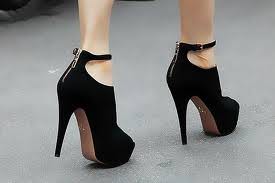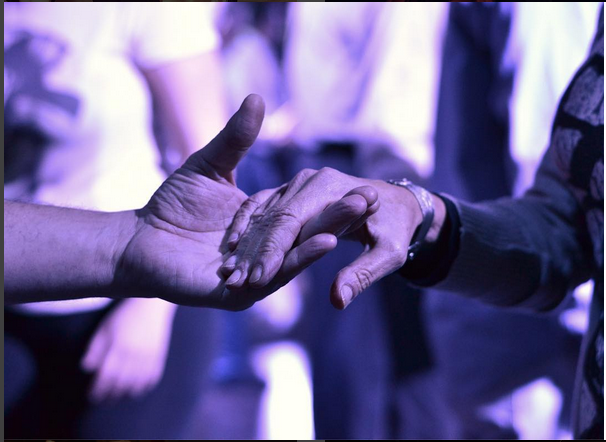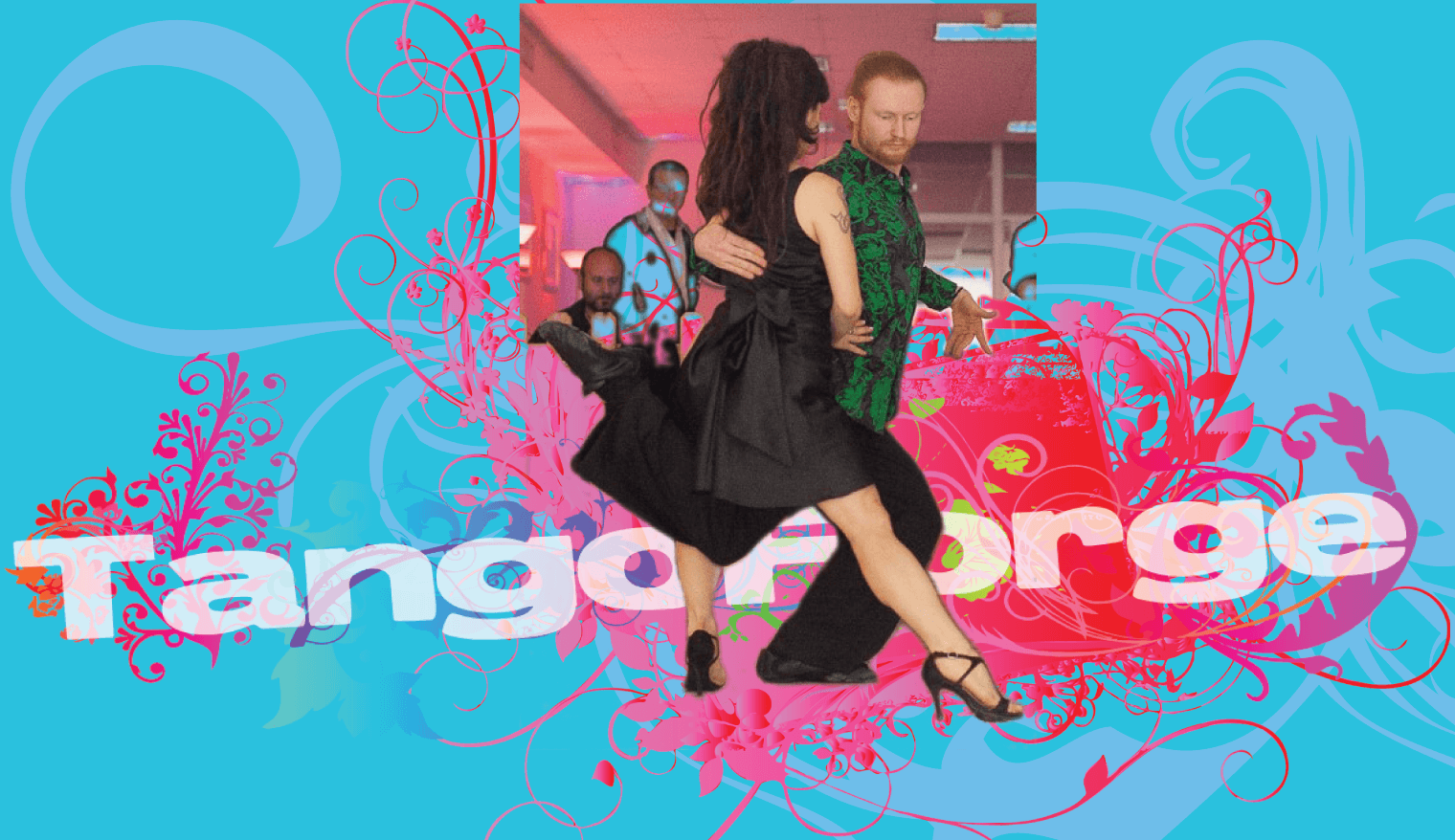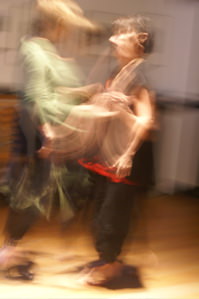Your First Milonga

Your First Milonga is an exciting occasion, but you may be very nervous right now. It’s always easier when you don’t feel mystified, so I’ve prepared an Orientation Guide. Are you getting ready for your first Milonga? The first time can be a little intimidating. But don’t worry, everyone is very happy to see a […]
The Perfect Tanguera

To create “The Perfect Tanguera” I wrote to my 10 favourite Milongueros of all time to ask for their advice. These aren’t professionals, or my dance partners, or my friends. They are actually the 10 most delicious men I’ve danced with anywhere in the world over the last 10 years. Most of them are guys I was too shy to even have a conversation with.
Balance is not a character virtue

So many students say “I have bad balance” as if they are describing their shoe size or model of smartphone. Balance is not an innate character virtue or flaw. It’s a skill. Importantly, tango balance is not the same as ballet balance, because in tango we build our balance with our partner, not alone, and […]
Partners

The deepest desire of human beings is not to be alone. Whatever our individual pathways toward or around this issue, tango has given us a way to experience partnership. I believe that it is this aspect of tango which is most compelling. Despite the thrills of sensuality, tenderness, attention, celebrity, and musicality, it is the […]
How to become a Hot TangoMan

This guide reveals women’s preferences and if you follow it, you’ll be on your way to charming and delighting them as a confident and hot Tanguero.
Divine Time Machines don’t pivot alone

To reveal more to herself and to her partner, the Revel must abandon the safe ground of knowledge, prediction, sequences, familiar movements, and righteousness. Crucially she must abandon her surety that the best thing she can do is to pivot. Pivoting is how we try to be good girls doing the hard work… But if we abandon a claim on certainty, avoid arbitrary endings and stay open to the previous movement continuing to unfold, then we offer ourselves to divine creativity.
Starting to dance Vals and Milonga

So you feel ready (or you feel like you should be ready) to dance faster? Here’s a guide to getting started with vals and milonga. General points Faster is harder than slower. Always perfect your technique slowly before attempting to do any movement fast. Both vals and milonga can be danced slowly. Start by finding the […]
Code of Ethics for Tango Communities

A code of ethics has three parts, the preamble which gives it context, the fundamental moral principles, and standards of conduct.
Why not to accelerate your steps while reveling giro

Many teachers teach revels to automatically accelerate some steps of the giro. The revel is to take front and side step in single time and then double time the back and subsequent side step. Of course it’s annoying when different teachers tell you different things. Here’s why NOT to accelerate automatically: A revel who learns […]
Get the whole story
I want to learn to lead, but I think I need to focus on following first. TangoForge encourages dancers to learn both leading and following. There are several reasons for this. It’s nice to have compassion for the challenges of the other role. If a teacher is working directly with you and wants to show […]
Free Leg Fluidity

Many revels ask me about the fluidity of my free leg. The first thing I tell them is that freedom of the free leg comes from the base leg. The way our bodies function is that if the body is out of balance, the psoas muscle of the free leg will not work as strongly So if […]
Emotions on the dance floor

Muscle control is just the entry ticket to the party. We still have choices to make about how to interact, what parts of ourselves to share, and how deeply we seek to connect.
Taking workshops
There are lots of Argentine Tango instructors to choose from. There are lots of organizers who want your money. There are lots of expensive classes. Everyone seems to rave about every teacher they’ve studied with and how fabulous the workshop was. Here are some tips to make a serious assessment of what you are getting […]
How to determine whether you are receiving quality instruction

There are lots of Argentine Tango instructors to choose from. There are lots of expensive workshops to attend. Everyone seems to rave about every teacher they’ve studied with and how fabulous the workshop was. Of course it’s fun to go to workshops just for the social part and the buzz. This post is about evaluating […]
When should the follower pivot?
The follower should pivot at the beginning of a step. If you automatically pivot at the end of a step, you are presuming to know the next direction. Finish your step, stretch onto your new base leg, and look to perceive the next direction. (There may not be one yet! – Thank you Armin!) Note that the follower is […]
About shoes for tango

Wear whatever makes you feel sexy. I see no reason whatsoever to wear technical dance shoes, and several reasons not to. Like clothing, there are a few functional requirements, but many non-dance shoes meet these requirements, while looking and feeling much better than tango shoes.
Websites to learn about and buy music

to learn Milonga.co.uk (also a store) Tango.dj Tanda of the Week Poesia to buy DJ Iain’s favorite is still Tango Store (This is the website of the Buenos Aires store, Zivals.) The prices are fairly good and you can listen to most of the music. Movie Mars has great prices, but their search function is […]
About Practicing

Every tango teacher exhorts students to practice, and every student agrees that they need to practice. Most dancers don’t. For the same reasons we don’t do lots of other things: We do what’s most urgent or compelling, and lots of actions and good ideas and “shoulds” get pushed aside. But we really want to improve […]
What are the different tango styles?

Unlike dances with formal international congresses and officiating bodies, tango is a happy chaos of meanings and pleasures. You’ll hear names like “salon tango”, “nuevo tango”, “milonguero style”, “Villa Urquiza style” and on and on. But on real dance floors all over the world you’ll be hard pressed to categorize a dancer or a teacher, and there’s no need to categorize yourself.
Why do teachers teach so differently?

One of the first things you’ll notice as a tango student is that each teacher has not only their own style of communication, but also their own idea of what’s important about tango and how to do it. Sometimes they even seem to contradict each other. This can be confusing and frustrating to students. The […]
How do I ask someone to dance? (the cabeceo)

The Argentine style of asking for a dance is that the leaders ask. They ask in a particular way, often from across the room, by seeking eye contact with followers. If eye contact is held, the leader nods toward the dance floor (or raises one or both eyebrows). This is the cabeceo.
I’m learning tango with my sweetheart, do I need to change partners?

There is no requirement to change partners, but it is recommended that you dance with lots of different people, even if you have a main partner.
How long do you dance with one person? (the tanda)

We dance three or four songs with one person – this is called a “tanda”, sometimes separated with 15-30 seconds of contrasting music, called a cortina (curtain). If there is no cortina, you can just count four songs.
It’s rude to leave your partner before the end of the tanda.
How do dancers manage the intimacy of tango? (the codigos)

The codigos of tango are a set of “codes” that make some structure around the intimacy of tango.
Troubles in practice?

While practicing, it is likely that you will have some frustration with your partner. When something is not working, it is VERY hard to tell what’s wrong and who is at fault, tempting though that is. Here are some tips:









